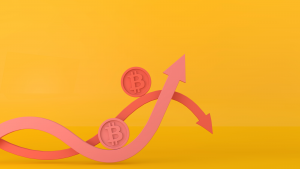Cryptocurrencies crash, burn or fizzle out all the time. According to CoinGecko, more than 50% of all tokens or coins launched after 2014 are now dead cryptocurrencies. This means that there are some cryptos to avoid.
Crypto projects die due to ecosystem failure—as in the case of Terra (LUNA-USD), not racking up enough of a dedicated user base or simply falling off the grid.
And most of the time, such cryptocurrencies never bounce back.
There are some signs to watch out for. One sign of a dead crypto is no tracking activity on major crypto trackers such as CoinGecko, CoinMarketCap, or Coinbase. Another sign is if there’s little to no price movement for long periods, there’s barely chatter about them, or they are struggling to gain traction.
When those things happen to a cryptocurrency, you’d be wise—as an investor—to steer clear.
Here are three of such cryptos to avoid.
Cryptos to Avoid: Terra Classic (LUNC-USD)

Terra Classic (LUNC-USD), formerly Terra, is the native token of the Terra blockchain stablecoin ecosystem launched in 2018. LUNC was the sister token to TerraUSD (UST)—Terra’s algorithmic stablecoin.
In its heyday, LUNA peaked at an all-time high of $119 in May 2022. At the time, it had shot past a few dollars in less than a year to being in the top ten in market capitalization (market cap).
However, in 2022, both LUNA and UST collapsed dramatically after the latter’s algorithmic protocol came undone. UST tanked from its peg of about $1 to mere cents, with LUNA hemorrhaging over 99% of its value.
In response, the Terra community created a fork of the Terra blockchain. LUNA became Terra Classic, and the freshly minted Luna token became the native token for the new blockchain.
LUNC is still traded on exchanges. But chances are near zero that it will reclaim its former status. The token is now trading at the ballpark of $0.0001300 and ranks at number 117 in market cap.
Einsteinium (EMC2-USD)

Einsteinium (EMC2-USD) is a crypto project that wanted to leverage blockchain technology to raise funding for scientific research. The idea was to pool funds by collecting tax on newly minted EMC2 tokens and by maintaining a transparent currency system based on EMC2.
The cryptocurrency was launched in 2014 and would go on a tear in 2017 — gaining by more than 100,000% at one point.
However, it doesn’t seem like there’s a lot of action going on lately. A cursory online search shows Einsteinium is effectively defunct.
Crypto trackers CoinGecko, CoinMarketCap, and Coinbase report virtually no price activity, and engagement on its X page doesn’t point to any specific future developments.
The coin’s demise seems to have begun when the major exchange it listed on—Bittrex—closed in November last year.
Whatever the case, it doesn’t seem as though Einsteinium will be coming back.
Mintcoin (MINT-USD)

Mintcoin(MINT-USD) is a cryptocurrency launched in 2014 that aimed to be an alternative to coins such as Bitcoin (BTC-USD) that use Proof-of-work (PoW) consensus mechanism—which consumes enormous amounts of energy.
It was one of the first cryptos to use PoS and rewarded users who staked MINT tokens with a 5% yearly return on their stake—which offered a fair reward to participants without flooding the market with too many coins.
At the moment, however, Mintcoin appears to be dead as a dodo.
Its founders last updated on X in 2018, and there’s virtually no activity on any exchange. Also, there’s little to no discussion or news surrounding it.
For all practical purposes, Mintcoin is not coming back and is another cryptocurrency to avoid.
On the date of publication, Hope Mutie did not have (either directly or indirectly) any positions in the coins mentioned in this article. The opinions expressed in this article are those of the writer, subject to InvestorPlace.com’s Publishing Guidelines.

